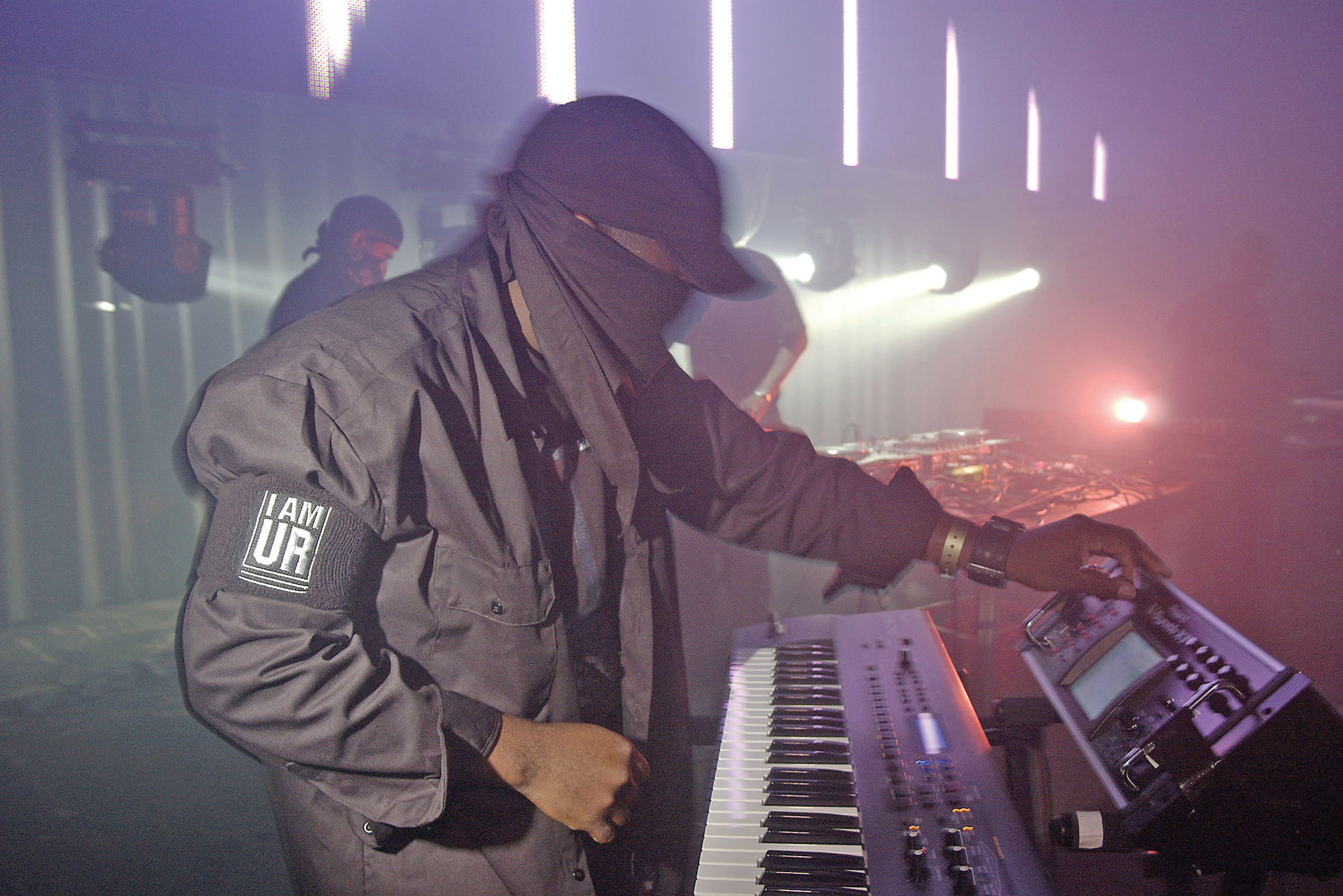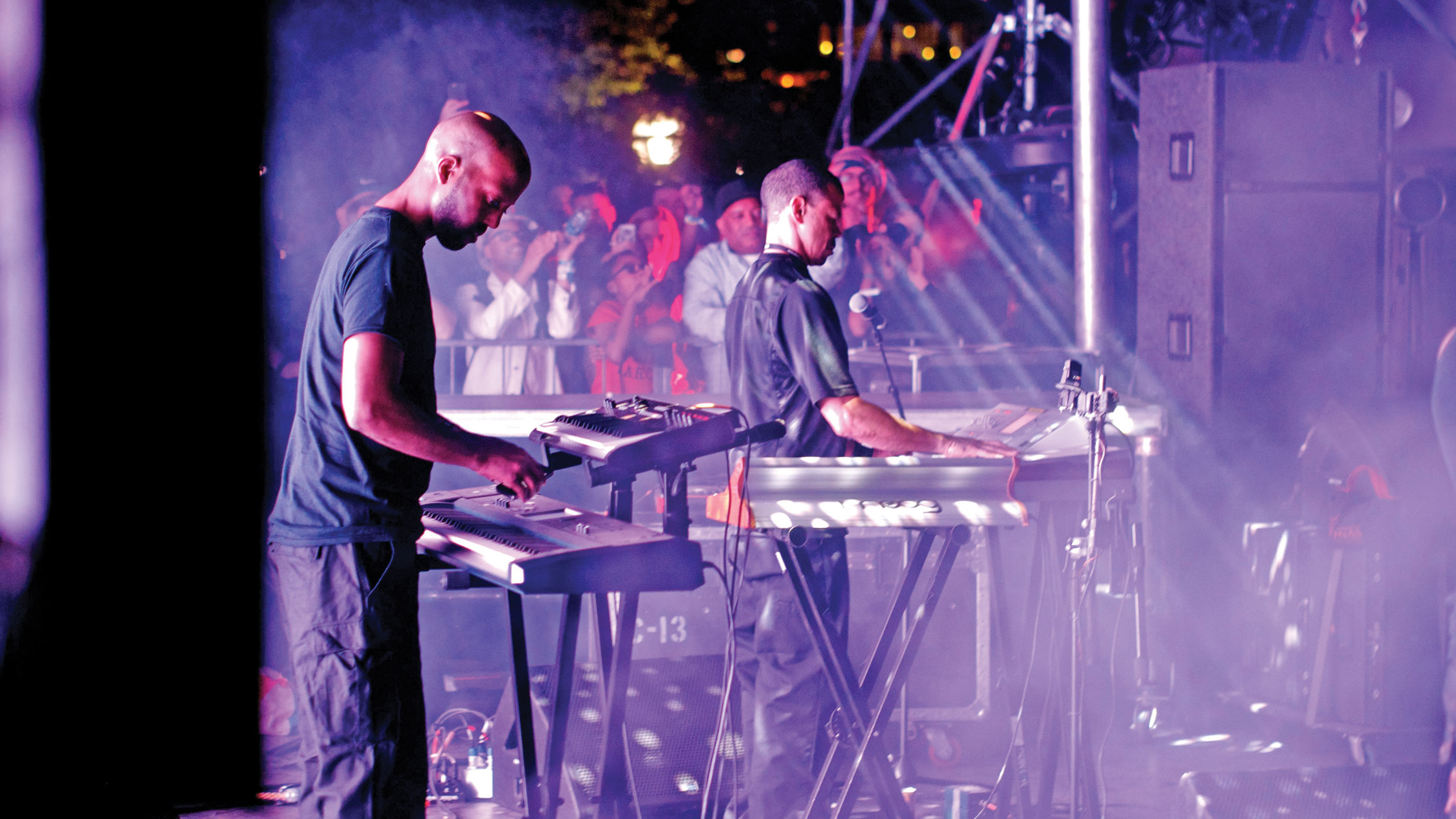
About 15 minutes into my conversation with Cornelius Harris, label manager of Underground Resistance (UR), we’re talking about alien abductions, singularity, and how the fear of superintelligent machines is really channeling something much deeper—a guilt and fear of machines doing unto humans what humans have done unto each other. As Octavia Butler, William Gibson, and many other speculative world builders have expressed, the threats found in science fiction re-present our current social and political anxieties in new garb. And here is where Underground Resistance enters, offering us fractal futures and electronic visions as a means of course-correcting the cyclical loop of history.
Formed in the late 1980s in Detroit, UR is a label and crew initiated by Jeff Mills, “Mad” Mike Banks, and Robert Hood, and has welcomed a powerhouse roster of affiliated artists over the course of its 30 years, including Drexciya, James Stinson, Blake Baxter, Nomadico and many more. Yes, they are important figures in early techno music, but UR also nurtures a comprehensive electronic music landscape that includes a range of styles from house to hi-tek jazz. When you ask members of UR how the sound came to be, they’ll most likely start by telling you the story of how a slew of sequencers, samplers, and other electronic audio gear became affordable by way of the American Federation of Musicians (AFM)’s tax against electronic music in the mid-‘80s. Musicians who could afford this equipment at original cost, and who were finding it difficult to get gigs, would sell their gear at discounted rates or pledge them to pawn shops. This opened the door for a younger, more black audience to scoop up these toys and start playing.
As journalist David McNamee wrote in The Guardian in 2008, sampling “was the working-class black answer to punk.” Techno developed by way of people experimenting with equipment that was not meant for them. And without the restrictions of an established electronic music industry, these artists found freedom of expression. No one was going to tell them what they could or could not do with their samplers and sequencers. There was no manual. Detroit’s techno musicians in the late ‘80s and early ‘90s were testing how far they could go with the sound. In writer Mike Rubin’s “Cosmic Cars” piece in Victory Journal, Mike Banks tells Rubin: “Motown is affiliated with cruising; UR is associated with horsepower.”
The first time I heard Underground Resistance felt like a confrontation. I was at a party at a Brooklyn venue that was closing soon, another cyclicality, and a DJ put on “Riot,” the title track off Riot EP (1991). The invocation of the siren and the “Now is the time” vocal alarm set up a sense of urgency, both artistically and politically for me. The four-track EP was ablaze with radicality and fierce rigor. It was the soundtrack I needed to make my rage generative. But when I express this fierceness to Harris, he asks if he can make two points. “We’re always going to be seen as radical if we ask for something,” he starts off. “If you’re used to having a full pie to yourself, giving a small slice to someone else feels like you’re giving up something. Share some of that! You’re going to have less and that’s ok. If people stopped to think about it, a lot of radical ideas wouldn’t be really radical. It’s just common sense.” We both laugh at this.

He continues with point two: “The minute you have an opinion, you’re militant. I understand that’s how things are put out there. UR is hard music from a hard city... I think a lot of it is about being able to tell your story, whatever it might be, and to have control over your own narrative.” These points are critical to how I read the work of UR. They’ve maintained unapologetic creative control in their storytelling, while also remaining accountable to their community. You see this sprinkled into the Underground Resistance Manifesto: “Techno is a music based in experimentation. It is music for the future of the human race. Without this music there will be no peace, no love, no vision.”
When I think about the legacy of UR and Detroit techno, I am reminded that this music has traveled the world and back again and serves as one of many indicators of Detroit’s capacity for cultural and technological innovation. When we talk about digital equity in Detroit, UR offers an important lens as champions for tech inclusion. Their Submerge space, just down the street from the Motown Museum, is part techno history museum, part record shop, and part community space. They offer studio support and resources for emerging artists in the city. And as they move around the world, they are powerfully loud advocates for keeping audio gear accessible. To them, keeping costs low ensures more people are at the table to experiment and push music forward. Harris tells me synth engineer Tatsuya Takahashi once thanked Mike Banks for showing him the impact and social responsibility manufacturers have in releasing affordable gear, with the Korg Volca surfacing as an example of a step in the right direction.
This kind of DIY for-us-by-us approach to digital equity can be seen throughout Detroit. The Detroit Community Technology Project (DCTP), a sponsored initiative of Allied Media Projects, has built six community-owned wireless mesh networks across the city since 2009 through their Digital Stewards program. DCTP’s work not only grants access to broadband to low-income residents, it gives people intimate exposure to how the technology runs and renders a replicable blueprint for ownership. Where Detroit ranks high in percentage of households without internet access, DCTP and the larger Detroit Digital Justice Coalition is propelling change through their online curriculums, zines, and campaigns. This work has strong ripple effects and has made DCTP an important model in community technology. After Hurricane Sandy, New America’s Open Technology Institute helped bring DCTP’s curriculum to Red Hook Initiative in New York, where young residents built a mesh network and produced a podcast series. I am not surprised to learn that DCTP’s director, Diana Nucera, has a musical alter ego named Mother Cyborg who makes healing electronic dance music. The jellied connection between healing, futurity, localism, and tech experimentation is felt in both the values of DCTP and UR.
I ask Harris what he thinks this next generation will do with techno and he says, “We opened the door for them, but then they went off and did something wild on their own that we’re now learning from. And that’s fun.”



